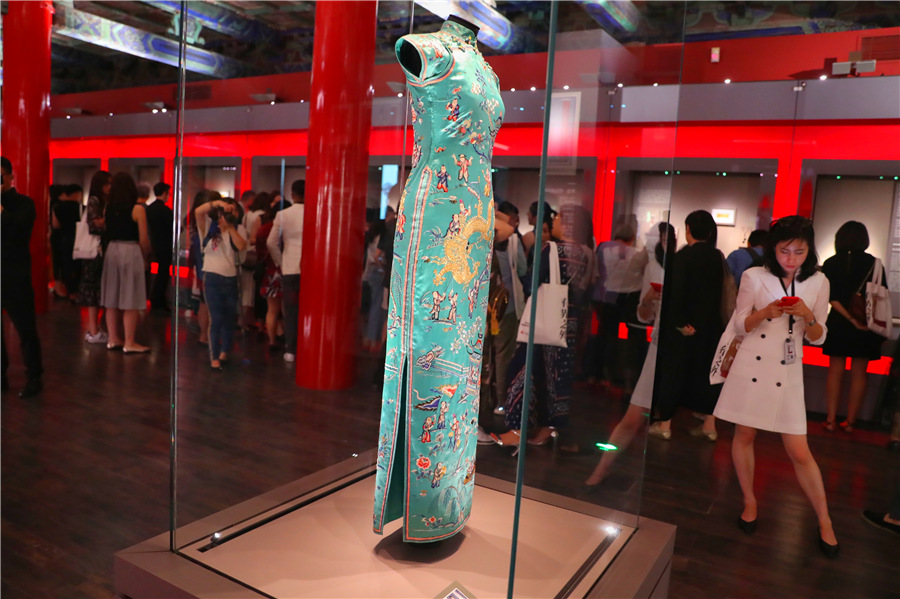 |
|
A qipao, which was once owned by Chinese fashion icon Oei Hui-lan, is part of the exhibits. [Photo by Jiang Dong/China Daily] |
His team spent months scouring the warehouses of the Palace Museum searching for symbols of Chinese power such as an imperial robe owned by Emperor Qianlong (1711-99), a gold imperial seal and chaozhu-beads worn by high officials during ceremonies at the royal court.
"Nevertheless, we can see that both the Eastern and Western traditions tend to reveal power through outstanding craftsmanship," Wang Yuegong says. "That's an emotional resonance."
Chinese inspirations
In preparation for the exhibition, Cartier also searched through its archives to reveal many of its lesser-known objects that have links with China.
Oei Hui-lan, wife of Chinese diplomat Wellington Koo (1888-1985), who is best known for being one of China's representatives at the Paris Peace Conference in 1919, stands out as a fashion icon for her refined tastes in jadeite. One of the many qipao (cheongsam) she once owned appears in the exhibition on loan from the Metropolitan Museum of Art.